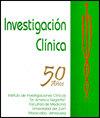卒中前体育活动与卒中患者血管内血栓切除术后良好的功能预后相关。
IF 0.1
4区 医学
Q4 MEDICINE, RESEARCH & EXPERIMENTAL
引用次数: 0
摘要
摘要研究表明,有规律的身体活动(PA)可以降低中风的风险。然而,脑卒中前PA对血管内血栓切除术(EVT)患者脑卒中后功能状态的保护作用仍不确定。本研究选取急性缺血性脑卒中住院患者,所有患者均在前循环大血管闭塞后行EVT。采用《国际身体活动问卷》评估脑卒中前PA水平,评价预后指标(改良Rankin量表评分和Barthel指数)。本研究共纳入144例患者。卒中前PA水平较高的患者中,男性活动量高于女性,且入院前吸烟、酗酒患者比例较高。此外,PA水平高的患者更有可能没有高血压和房颤病史,入院时甘油三酯水平较低。我们确定高卒中前PA水平与3个月时良好的功能预后独立相关。此外,高卒中前PA与两周时良好的功能结果之间没有相关性。卒中前PA水平高与3个月时日常生活活动的满意度独立相关。卒中前常规PA是前循环卒中患者接受EVT后功能预后良好的独立预测因子,对功能预后有保护作用。本文章由计算机程序翻译,如有差异,请以英文原文为准。
Pre-stroke physical activity is related to good functional outcomes in stroke patients after endovascular thrombectomy.
Abstract. Studies have shown that regular physical activity (PA) may re-duce the risk of stroke. Nevertheless, the protective effect of pre-stroke PA on the post-stroke functional status in patients treated with endovascular throm-bectomy (EVT) is still uncertain. For this study, hospitalized patients with acute ischemic stroke were selected, all of whom underwent EVT after occlusion of the large vessels in the anterior circulation. The PA levels before the stroke were assessed by the International Physical Activity Questionnaire, and the outcome indicators (the modified Rankin scale score and the Barthel index) were evalu-ated. A total of 144 patients were included in this study. Among the patients with high PA levels before the stroke, men were more active than women, and the proportion of patients with smoking and alcohol abuse was high before admission. Also, the patients with a high PA level were more likely to have no history of hypertension and atrial fibrillation, and had lower triglyceride levels at admission. We determined that a high pre-stroke PA level is independently related to a favorable functional outcome at three months. In addition, there was no correlation between a high pre-stroke PA and a good functional outcome at two weeks. A high pre-stroke PA level is independently associated with sat-isfactory activities of daily living at three months. Regular PA before a stroke is an independent predictor of a favorable functional outcome in patients with anterior circulation strokes who receive EVT, and it has a protective effect on the functional prognosis.
求助全文
通过发布文献求助,成功后即可免费获取论文全文。
去求助
来源期刊

Investigacion clinica
MEDICINE, RESEARCH & EXPERIMENTAL-
CiteScore
0.20
自引率
50.00%
发文量
2
审稿时长
>12 weeks
期刊介绍:
Estudios humanos, animales y de laboratorio relacionados con la investigación clínica y asuntos conexos.
 求助内容:
求助内容: 应助结果提醒方式:
应助结果提醒方式:


